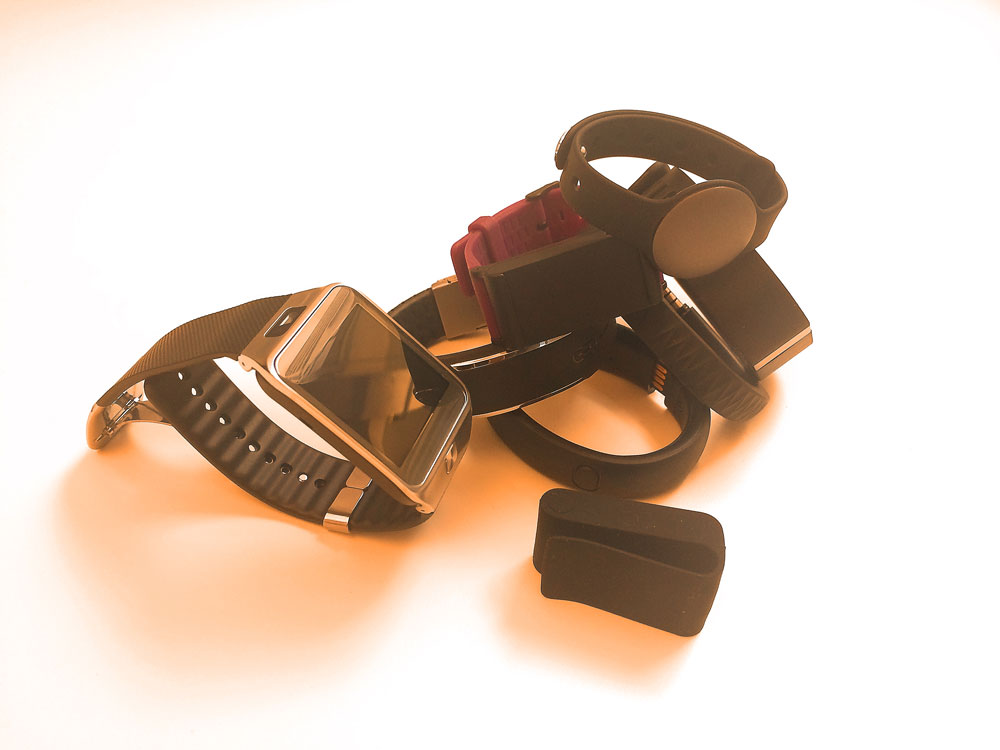Fantasy Fitness Tracker: 8 Absolutely Must-Have Features

As more and more fitness trackers hit the market, many of these devices seem to excel in some areas, but fall short in others. We wondered: what if we could combine the best features of the most popular fitness trackers to make a "fantasy" tracker? Here are the top features we would include.
A screen you can see without pushing buttons
Our fantasy fitness tracker would have a screen that lights up without requiring the press of a button. A few fitness trackers and smartwatches have this feature — including Basis and Samsung's Gear 2 — their screens automatically light when you twist your wrist. This way, you can see the screen (and your stats) even if your hands are full, or you're in the middle of a workout. An alternative would be to have a screen that's always on, like that of the Garmin Vivofit.
Reminders to move you can't miss
The goal of many fitness trackers is to get you moving, and some even provide alerts to remind you to get up and walk around. But these alerts are not always obvious, and it can be easy to miss them — the Nike+ FuelBand flashes the word "GO" and your name, and the Vivofit shows a red bar that gets longer the more time you spend idle. But in both cases, you can miss the alert if you're not looking at the screen — for example, if you're working.
What you really need is an alert you can feel, like a vibration on the wrist. On this point, the Jawbone UP has the right idea, with a feature called "Idle Alert," in which the device vibrates after it detects you've been idle for a certain amount of time. We'd definitely want this feature on our fantasy tracker.
An alarm to wake you up
Sign up for the Live Science daily newsletter now
Get the world’s most fascinating discoveries delivered straight to your inbox.
On a related note, our fantasy fitness tracker would also have an alarm you could set to wake you up in the morning. It's surprising how many pricey fitness trackers don't offer this simple feature. We particularly like the alarm on the Fitbit One, which quietly vibrates to wake you up.
The option to wear the device multiple ways
Many fitness trackers are designed to be worn on the wrist, and that's fine if you're used to wearing a watch or bracelets, but it's nice to be able to change things up once in a while. That's why we like the idea of having more than one way to wear a fitness tracker. The Withings Pulse O2 can be placed in a belt clip and worn on the waist, or attached to a wristband and worn like a watch. The Fitbug Orb and Misfit Shine also provide ways to wear the devices around the neck like a necklace.
Easy-to-see progress
Our ideal fitness tracker would visually display how close you are to reaching your activity goals, allowing you to see your progress with just a glance. A few fitness trackers, including Pulse O2 and Basis, have a bar along the bottom of the band that fills up as you make progress. The FuelBand has a similar feature — a string of lights, progressing from red to green, that light up as you get closer to your goal.
An adjustable strap
The wristband for our fantasy fitness tracker would have an adjustable strap, so that the device does not bounce around when you're active. While reviewing the fitness trackers on the market, we've found that some of those without an adjustable strap, such as the FuelBand and UP, come in different sizes to accommodate large and small wrists, but it's hard to beat an adjustable strap if you want a good fit.
Measuring heart rate on the wrist
More and more fitness trackers are including sensors that measure heart rate — either on the wrist, or the finger tip. We think a heart rate monitor on the wrist is more convenient, because it lets you check your heart rate on the go, without having to remove the device.
Meaning behind the numbers
Our fantasy fitness tracker would do more than track your steps and count your calories — it would provide some meaning behind those numbers: How much exercise should you be getting? How many hours of sleep do you need, and what can you do to sleep better? How can you get more fruits and veggies into your diet?
A few fitness trackers excel in this area: The app for the Pulse has a section that discusses how much activity you need (150 minutes of moderate to vigorous activity per week, according to the World Health Organization), as well as tips to sleep better. The Fitbug Orb allows users to fill out a health assessment on their website that tells you not only if you fall short of health recommendations, but also what you can do to improve your health.
Follow Rachael Rettner @RachaelRettner. Follow Live Science @livescience, Facebook & Google+. Original article on Live Science.

Rachael is a Live Science contributor, and was a former channel editor and senior writer for Live Science between 2010 and 2022. She has a master's degree in journalism from New York University's Science, Health and Environmental Reporting Program. She also holds a B.S. in molecular biology and an M.S. in biology from the University of California, San Diego. Her work has appeared in Scienceline, The Washington Post and Scientific American.










